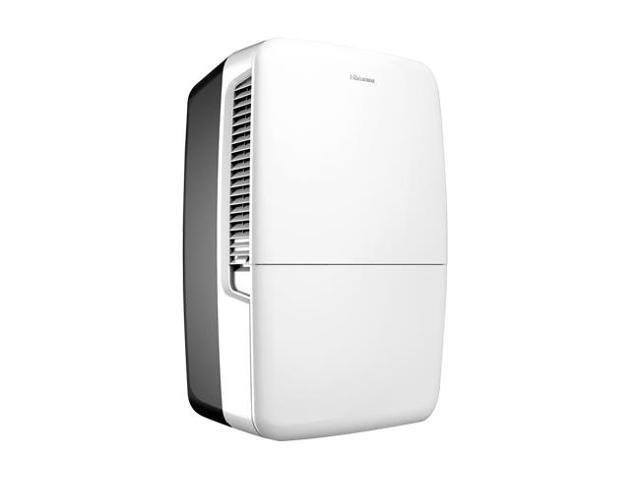Dehumidifiers use a heatpump (comparable to an air conditioner’s heatpump) or chemical adsorbents to eliminate wetness from the air without cooling down the air.
A heat pump dehumidifier utilizes a fan to attract interior air over a heat exchange coil. The coil is practically cold. The water in the air condenses on the coil as well as is drained. A 2nd warmth exchange coil reheats the air, which the dehumidifier tires right into the area.
A heatpump dehumidifier discards heat lost from the compressor and follower motors into the air. It goes back to the indoor air the heat generated by the dehumidifier transforming water vapour to liquid.
Chemical adsorbent dehumidifiers
This sort of dehumidifier is developed for warm, moist environments and also is not actually matched for use in Canada.
Chemical adsorbent dehumidifiers absorb moisture from the air with a “desiccant”– a drying agent such as silica gel. The desiccant is on a warmth exchange wheel. A different air loop dries out the wheel and also wears down the warm, wet air outdoors through unique ducting.

A chemical adsorbent dehumidifier uses extra energy than a heat pump dehumidifier It is just cost-efficient when it makes use of gas for warm exchange– and afterwards just if natural gas is available at a low summertime price.
Homemade dehumidifier.
Some creative individuals make use of bags of roadway de-icing salt to take in wetness from the air. The damp salt solution trickles into a frying pan or floor drain, drying out the air. Because the salt runs off with the water removed from the air, it needs to be replaced according to this basement guide. The system has no relocating components.
If you try this homemade dehumidifier, remember that salt is very harsh to steels as well as rather hard on the skin.
Dehumidifying ventilators
This kind of dehumidifier has a sensor-controller and exhaust fan. You established the sensor-controller to run when humidity reaches a set degree. A dehumidifying ventilator is especially effective if the moisture resource is in your basement.
Evaporating ventilators do not recover warmth yet they utilize much less power than heatpump dehumidifiers. They are ineffective in warm, damp weather condition, as they bring much more outside air right into your home. They can be reliable in winter.
A dehumidifying ventilator depressurizes your basement, which can trigger combustion gas spillage. Make sure your heating professional checks the venting for your gas furnace, hot water heater and also wood-burning appliances. Take into consideration using a carbon monoxide cautioning tool if you set up a dehumidifying ventilator.
Picking a Dehumidifier
Heatpump dehumidifiers are intricate, low-production machines and are not inexpensive items. Spring appears to be the most effective time to acquire: in the last couple of years dealers have actually held sales early in the spring with cost savings of $50 to $100.
The more water a dehumidifier holds– which is measured in litres or U.S. pints a day– the much more it costs. You pay even more for unique attributes.
In 2000, you can expect to pay in between $200 as well as $250 for a system ranked at 10 L (21 U.S. pints or 2.1 royal gal.) a day– suitable for a cottage with a moderate dampness trouble. The cost rises to in between $250 as well as $350 for a system with a capability of 20 L (42 U.S. pints or 4.3 royal girl.) a day– appropriate for a large house with much more extreme issues.
Running costs for both units have to do with the same if they both have the same Effectiveness Aspect. The next section discusses the Effectiveness Variable.
Don’t try to conserve money by acquiring a device that does not have automatic defrost. If a space is also amazing, a dehumidifier can frost over as well as quit removing moisture. A frosted-over dehumidifier left running for a long time will certainly break down.

